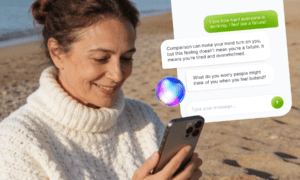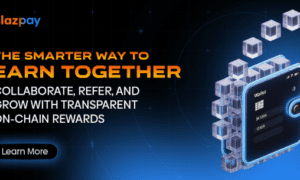The digital age has transformed our lives, including how we learn. Education is no longer a one-size-fits-all approach (if it ever was), and personalized and interactive experiences are becoming more commonplace, preparing our future leaders for this dynamic new landscape.
While traditional educational practices may have been sufficient in the past, today, these methods often fall short, limiting creativity and failing to cater to each student’s learning style and needs.
Fortunately, innovative educational and online tutoring platforms are emerging that embrace interactive learning and personalized attention. These platforms leverage technology to create student-centric learning environments where each learner can thrive.
Some benefits include increased engagement, improved understanding, and the development of critical thinking and problem-solving skills. Let’s take a more detailed look.
The power of interactive learning
Interactive learning is a transformative academic approach involving active student participation and engagement. Unlike traditional passive learning methods, this approach encourages students to participate in their education actively, leveraging technology to create engaging classroom experiences.
Learning by doing
The “learning by doing” concept is at the heart of interactive learning. Rather than listening to lectures or reading textbooks, this approach sees students engage with the material, apply concepts, and actively participate in the learning process. It’s a more hands-on experience that helps create a deeper understanding of the subject. It also helps students retain information more effectively.
Encouraging critical thinking and problem-solving
Interactive learning also encourages critical thinking and problem-solving – essential skills in today’s rapidly changing world. Students learn to analyze information, formulate arguments, and discover innovative solutions through group discussions, case studies, and project-based assignments. This active involvement in the learning process enhances students’ cognitive abilities and prepares them for real-world challenges.
Leveraging digital technology for immersive experiences
Interactive learning leverages digital technology to create immersive educational experiences. For example, virtual labs allow students to conduct experiments and explore scientific concepts in a safe, controlled environment. Digital simulations can transport students into history or around the globe, giving them a greater understanding of the subject.
Catering to diverse learning styles
While some students learn best through visual presentations, others prefer auditory or tactile learning methods. With interactive learning, educators can incorporate multimedia elements like videos, audio clips, interactive quizzes, and games to cater to different learning preferences. This personalized approach makes learning more accessible and inclusive.
Immediate feedback for continuous improvement
Interactive learning also allows for immediate feedback. Through digital quizzes and interactive assessments, students can instantly see where they’ve made mistakes and understand how to correct them. This real-time feedback loop supports continuous learning and improvement.
The power of interactive learning lies in its ability to make education more engaging, immersive, and effective. Interactive learning transforms the educational landscape by fostering active participation, enhancing critical thinking, and leveraging technology.
Personalized attention for empowered learners
Personalized attention has emerged as a critical factor in enhancing student learning outcomes. It centers around a learner-centric approach, where each student’s unique learning style, pace, interests, and goals are considered. This shift from a one-size-fits-all model to individualized learning pathways revolutionizes education, fostering more engaged and empowered learners.
The benefits of personalized attention in education are manifold. It allows students to learn at their own pace, catering to quick learners who can advance without waiting and slower learners who need extra time to grasp concepts. It also accommodates different learning styles, recognizing that while some students may prefer visual aids, others might respond better to auditory or hands-on learning.
Personalized attention helps make learning more relevant and engaging for students. By incorporating their interests and aspirations into the learning journey, educators can motivate students to take ownership of their education and foster a love for lifelong learning.
Challenges in the digital age
By empowering students to take charge of their learning, digital education fosters qualities like initiative, adaptability, and resilience, critical traits for future leaders. It prepares students to excel in a rapidly changing world.
It also equips them with the skills to navigate complexity, harness technology, and drive innovation, essential competencies for the leaders of tomorrow. It’s not without its challenges, though. However, these challenges also present opportunities.
Equitable access to technology
The challenge: Ensuring equitable access to technology and digital resources. Socioeconomic disparities often result in a digital divide, with students from low-income families lacking the necessary devices or internet connectivity to participate in digital learning. This can exacerbate existing educational inequalities, hindering certain groups of students from fully benefiting from digital-age education.
The opportunity: For policymakers, educators, and technology providers to join and bridge the digital divide. Initiatives such as providing subsidized or free devices, implementing community broadband projects, or creating public digital learning spaces help ensure all students have the tools they need to succeed.
Teacher training
The challenge: Training teachers to effectively use new technologies. While digital tools offer innovative ways to engage students and enhance learning, they require teachers to learn new skills and adapt their teaching methods. This can be daunting, especially for those who are less tech-savvy.
The opportunity: Providing comprehensive training and ongoing support can equip teachers with the skills to embrace digital technology in their classrooms. This enhances the quality of education and empowers teachers to stay at the forefront of educational innovation.
Screen time and data privacy concerns
The challenge: Excessive screen time and data privacy. With increased digital learning comes increased screen time, which can have health implications for students. Additionally, using digital tools raises questions about data privacy and security, particularly when sensitive student information is involved.
The opportunity: To promote responsible digital practices and strengthen data protection measures. Educators can teach students about digital well-being, including managing screen time and understanding online safety. Simultaneously, technology providers can work towards developing robust security features and policies to safeguard user data.
With its emphasis on interactive learning and personalized attention, digital-age education represents a dramatic shift in how we approach education. It has the potential to produce more engaged, empowered learners who are prepared to lead in the twenty-first century.
It is critical that all stakeholders, including educators, politicians, parents, and students, embrace innovative educational platforms as we negotiate this shift. By doing so, we can ensure that our future leaders have the skills, knowledge, and mentality required to flourish in an increasingly complicated and digital environment.

































